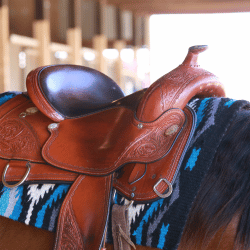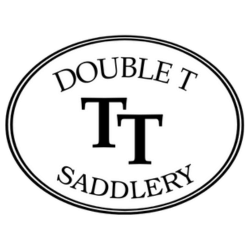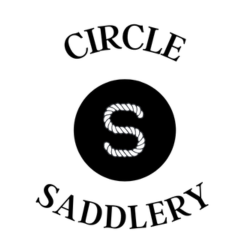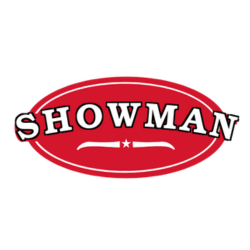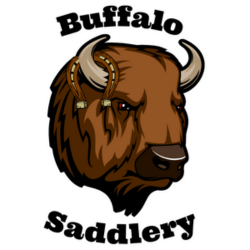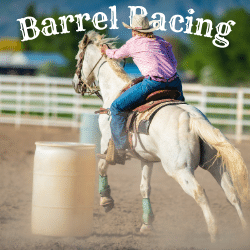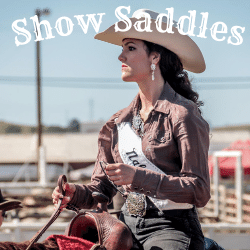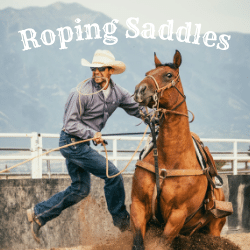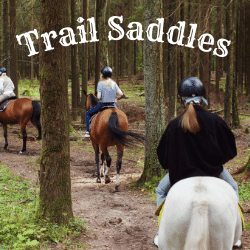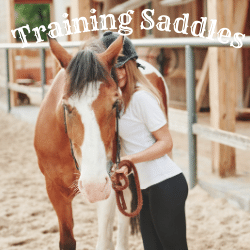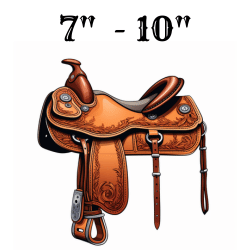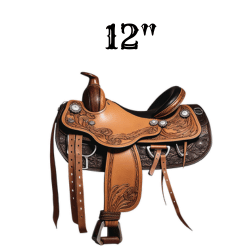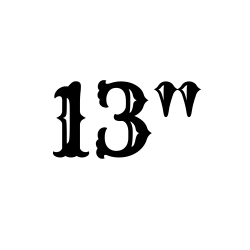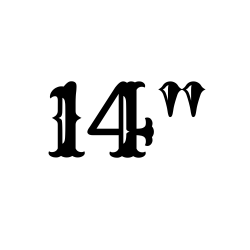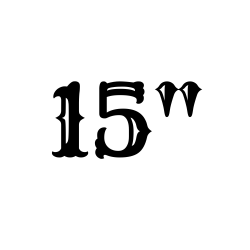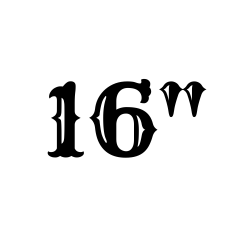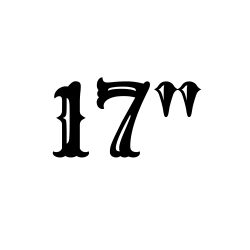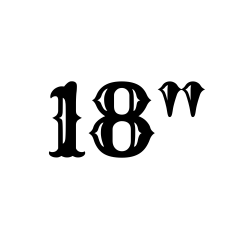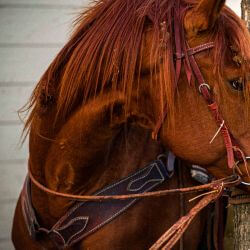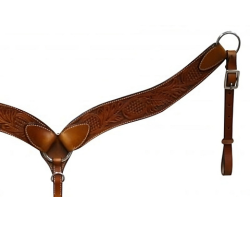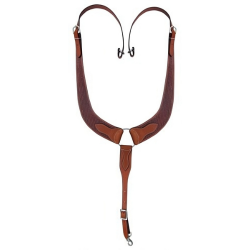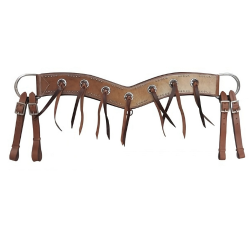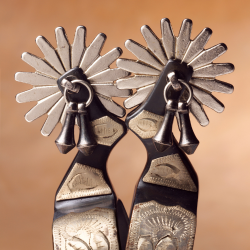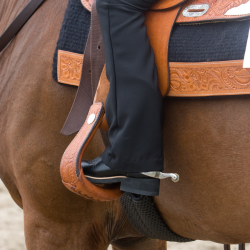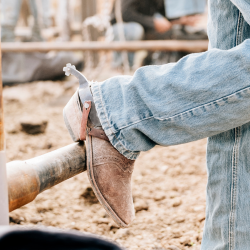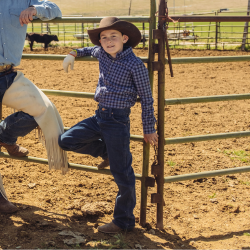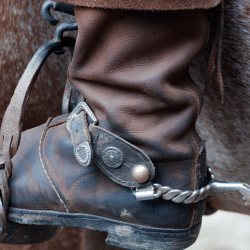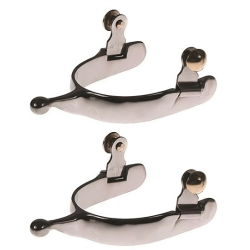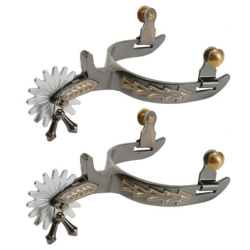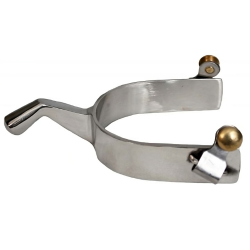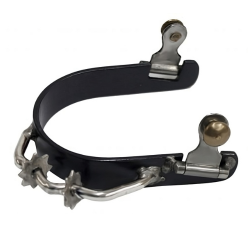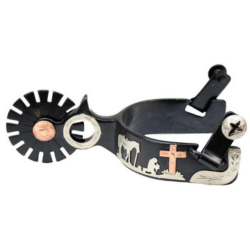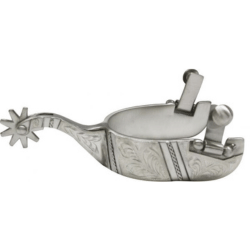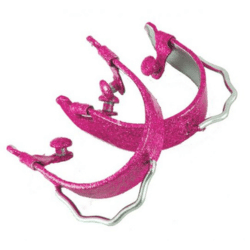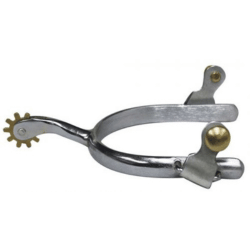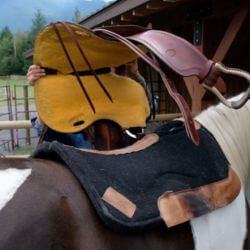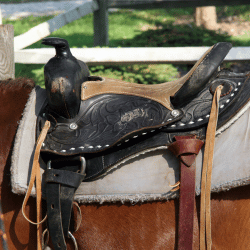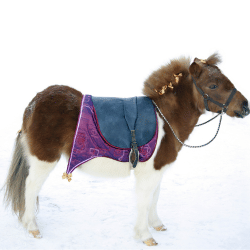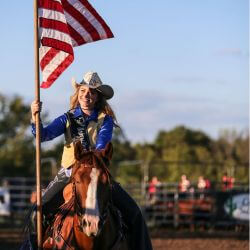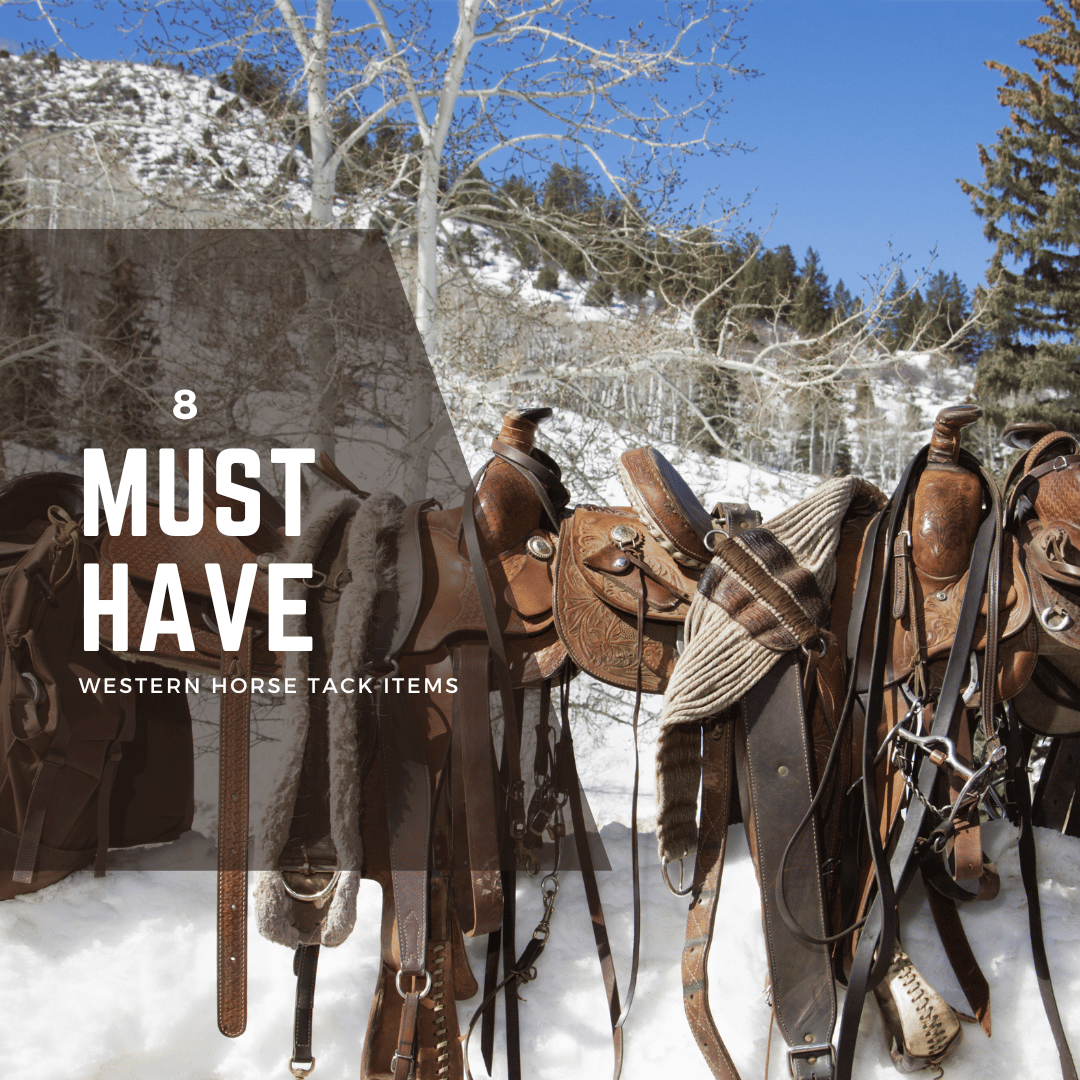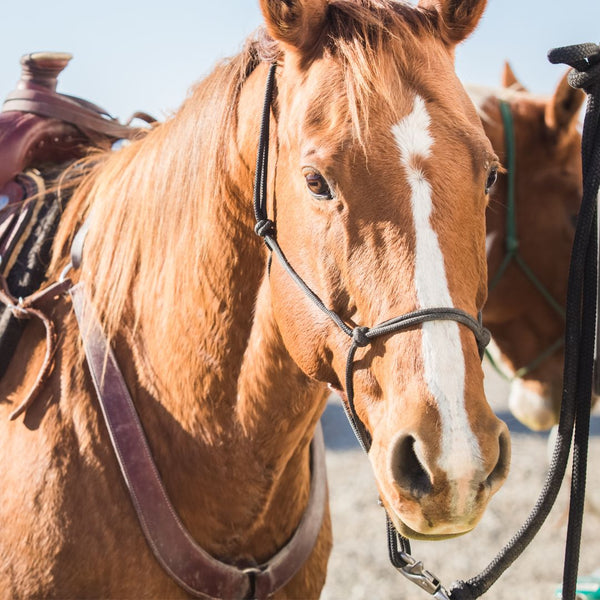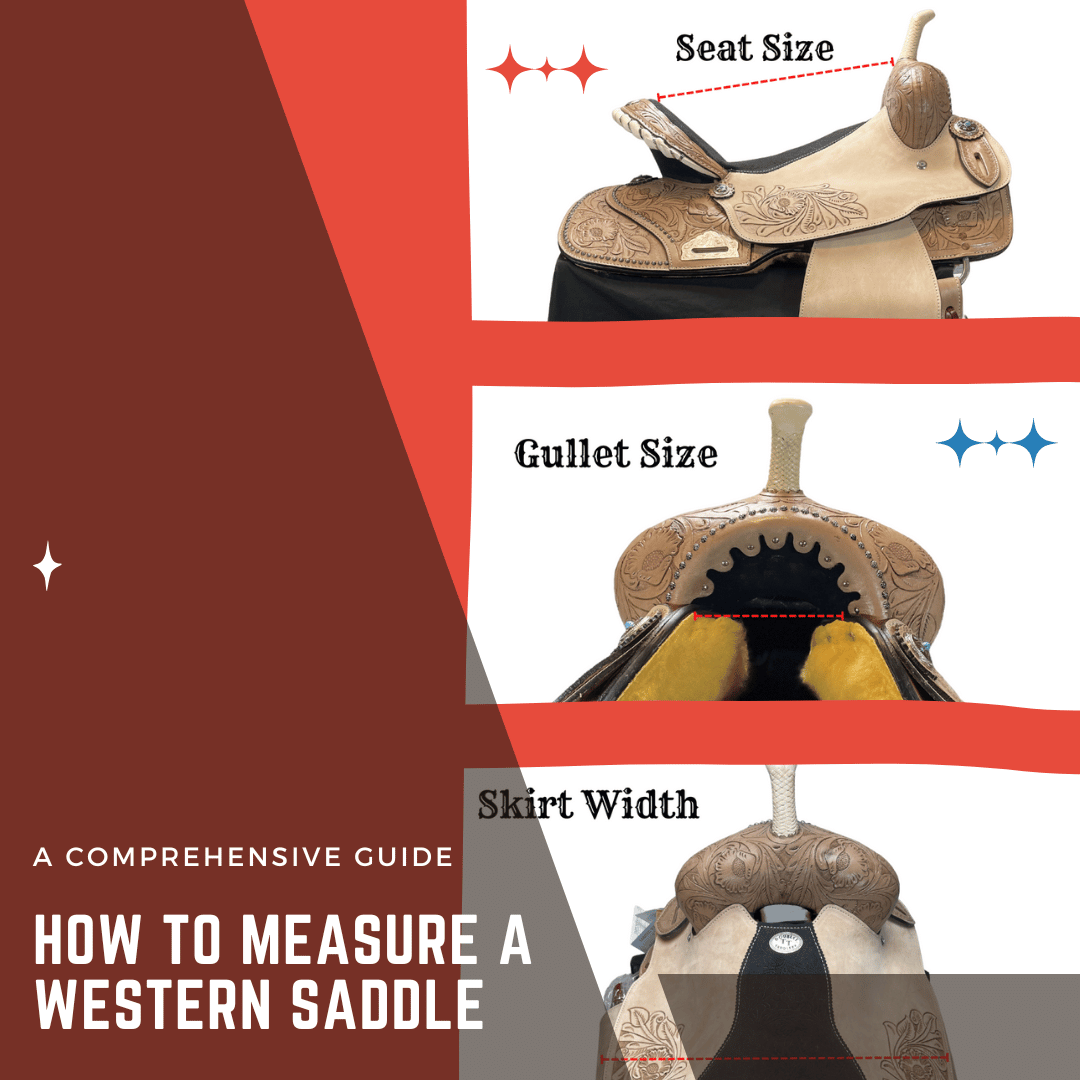Are you a western rider looking to add some new gear to your collection? Or perhaps you're just starting out and want to make sure you have all the essential items? Either way, having the right western horse tack is crucial for a safe and enjoyable ride. In this post, we'll be sharing our top 10 must-have western horse tack items that every rider should consider adding to their collection.
1.) A western saddle
This is the most important piece of tack for any western rider. Make sure to choose a saddle that fits both you and your horse well, and consider factors like the type of riding you'll be doing, your horse's conformation, and your own personal preferences.
Shop All Western Horse Saddles For Sale
As a western rider, the saddle you choose is arguably the most important piece of tack you'll own. Not only is it the foundation of your riding setup, but it's also the primary way you'll communicate with your horse and guide their movement. That's why it's so important to make sure you choose a saddle that fits both you and your horse well.
When it comes to fit, the most important thing is that the saddle sits evenly on your horse's back and doesn't cause any pressure points. A saddle that's too wide or too narrow can cause discomfort and even long-term damage to your horse's back. To ensure a good fit, you'll need to measure your horse's withers, spine, and girth, and use these measurements to choose a saddle that's the right size.
In addition to fit, you'll also want to consider the type of riding you'll be doing and your horse's conformation. Different saddles are designed for different types of riding, such as trail riding, roping, or barrel racing, so make sure to choose a saddle that's appropriate for your needs. You'll also want to consider your horse's conformation, as certain saddles may work better for horses with shorter backs or wider shoulders.
Finally, don't forget to consider your own personal preferences. Do you prefer a certain type of tree (the internal structure of the saddle)? Do you want a saddle with a lot of padding or one that's more streamlined? Do you want a saddle with a lot of extras, like a breast collar or back cinch, or do you prefer a more minimalist approach? Answering these questions will help you find a saddle that not only fits well and is suitable for your riding needs, but also one that you'll enjoy using.
Overall, choosing a western saddle is a big decision, but with a little research and attention to fit, you can find the perfect saddle for you and your horse
2.) Reins
These are used to communicate with your horse and guide their movement. Look for reins that are made of a comfortable material and are the right length for you.
Reins are an essential piece of western horse tack that are used to communicate with your horse and guide their movement. They're attached to the bit in your horse's mouth and allow you to give subtle cues to your horse while riding.
When choosing reins, it's important to look for a pair that are made of a comfortable material. Leather reins are a classic choice, but they can be stiff and require regular conditioning to stay soft. Synthetic reins, such as those made of nylon or biothane, are a more modern option that are often easier to care for and may be more comfortable for your horse.
In addition to material, you'll also want to consider the length of the reins. The reins should be long enough to allow you to comfortably hold them in both hands while riding, but not so long that they drag on the ground or get tangled. A good rule of thumb is to have the reins be about the same length as the distance from your elbow to your fingertips when your arm is extended.
Finally, you'll want to consider the type of reins you want. There are many different styles to choose from, including split reins, romal reins, and one-ear reins, each of which has its own unique benefits. Split reins, for example, allow for more flexibility and movement, while romal reins have a longer, braided section that can be used for added leverage. One-ear reins are a popular choice for horses that are prone to leaning on the bit or for riders who want to use their reins with one hand.
Overall, choosing the right reins is a matter of personal preference, but it's important to make sure they're comfortable for both you and your horse and are the right length for your needs.
3.) Spurs
These are optional, but many western riders like to have a pair on hand for added cues. Choose spurs that are the right size for your boots and have a mild to moderate rowel.
Spurs are a piece of western horse tack that are worn on the heels of the rider's boots and used to give subtle cues to the horse. They're not essential for every rider, but many western riders like to have a pair on hand for added communication and control.
When choosing spurs, it's important to make sure they're the right size for your boots. Spurs that are too small or too large can be uncomfortable to wear and may not function as effectively as they should. You'll also want to consider the type of rowel (the rotating disk on the end of the spur) that you want. Rowels can range from very mild (with short, blunt points) to very sharp (with long, thin points), so it's important to choose a rowel that's appropriate for your horse and your riding style. A mild to moderate rowel is a good choice for most riders, as it provides enough pressure to be effective but isn't too harsh for the horse.
In addition to size and rowel type, you'll also want to consider the material of the spurs. Like reins, spurs can be made of leather or synthetic materials, each of which has its own benefits and drawbacks. Leather spurs are a classic choice, but they can be stiff and require regular conditioning to stay soft. Synthetic spurs, on the other hand, are often easier to care for and may be more comfortable for your horse.
Overall, spurs are a useful tool for many western riders, but it's important to choose a pair that are the right size, have a mild to moderate rowel, and are made of a comfortable material. By considering these factors, you can find a pair of spurs that will be an effective and comfortable addition to your tack collection.
4.) A breast collar
This helps to keep the saddle in place and provides additional support for the horse. Look for a breast collar that is comfortable for your horse and fits well with your saddle.
Shop All Western Breast Collars
A breast collar is a piece of western horse tack that's worn around the horse's chest and helps to keep the saddle in place and provide additional support. It's not essential for every rider, but many western riders find it to be a useful addition to their tack collection.
When choosing a breast collar, the most important thing to consider is comfort. The breast collar should be snug enough to stay in place, but not so tight that it causes discomfort or rubs the horse's skin raw. To ensure a good fit, you'll want to measure your horse's chest and choose a breast collar that's the right size. You'll also want to consider the material of the breast collar. Leather breast collars are a classic choice, but they can be stiff and require regular conditioning to stay soft. Synthetic materials, such as nylon or biothane, are a more modern option that are often easier to care for and may be more comfortable for your horse.
In addition to comfort, you'll also want to consider how the breast collar fits with your saddle. A breast collar that's too wide or too narrow can cause the saddle to sit unevenly or cause pressure points, so it's important to choose a breast collar that fits well with your saddle. You'll also want to consider the style of the breast collar. Some breast collars have a lot of decorative elements, such as conchos or fringe, while others are more minimalistic. Choose a style that fits your personal preference and the overall look you want to achieve.
Overall, a breast collar is a useful piece of tack for many western riders, but it's important to choose one that's comfortable for your horse and fits well with your saddle. By considering these factors, you can find a breast collar that will be an effective and comfortable addition to your tack collection
5.) A cinch
This is a wide strap that goes around the horse's girth and helps to secure the saddle. Make sure to choose a cinch that is the right size and made of a durable material.
Shop All Western Saddle Cinches
A cinch is a wide strap that goes around the horse's girth and helps to secure the saddle in place. It's an essential piece of western horse tack and is a key part of keeping you and your saddle safe and comfortable while riding.
When choosing a cinch, the most important thing to consider is size. The cinch should be wide enough to provide a secure hold on the saddle, but not so wide that it causes discomfort or rubs the horse's skin raw. To ensure a good fit, you'll want to measure your horse's girth and choose a cinch that's the right size. You'll also want to consider the material of the cinch. Leather cinches are a classic choice, but they can be stiff and require regular conditioning to stay soft. Synthetic materials, such as nylon or biothane, are a more modern option that are often easier to care for and may be more comfortable for your horse.
In addition to size and material, you'll also want to consider the durability of the cinch. A cinch that's prone to stretching or breaking can be dangerous, so it's important to choose a cinch that's made of a high-quality material and is built to last. Look for cinches that are reinforced with extra stitching or have metal hardware, as these tend to be more durable.
Overall, a cinch is a vital piece of tack for any western rider, and choosing the right one can make a big difference in your riding experience. By considering size, material, and durability, you can find a cinch that will be a reliable and comfortable addition to your tack collection.
6.) Saddle Bags
Western saddle bags are a type of accessory that is designed to be attached to a western saddle and used to carry a variety of items while riding. These bags are typically made of leather or synthetic materials and are designed to be durable and resistant to the elements.

There are a variety of different types of western saddle bags available, including single pannier bags that are designed to be attached to one side of the saddle, and double pannier bags that are designed to be attached to both sides of the saddle. Some saddle bags are also designed to be hung from the back of the saddle, while others are designed to be attached to the front or sides of the saddle.
Western saddle bags are useful for carrying a variety of items while riding, including water bottles, snacks, first aid kits, and other supplies. They are also often used to carry personal items such as wallets, phones, and keys.
In addition to their functional uses, western saddle bags can also be used to add a decorative touch to the saddle. Many saddle bags are available in a variety of colors and styles, and can be customized with personalization options such as monograms or initials.
Overall, western saddle bags are a useful and practical accessory for any rider, and can help to make your rides more comfortable and convenient.
7.) A headstall and bit
These are used to communicate with the horse and control their movement. Look for a headstall and bit that fit your horse well and are made of a comfortable material.
A headstall and bit are essential pieces of western horse tack that are used to communicate with the horse and control their movement. The headstall holds the bit in place in the horse's mouth, while the bit is the actual device that's placed in the horse's mouth and used to give cues.
When choosing a headstall and bit, the most important thing to consider is fit. The headstall should be adjustable to fit your horse's head comfortably, and the bit should be the right size for your horse's mouth. A headstall or bit that's too small or too large can cause discomfort or even long-term damage to your horse's mouth. To ensure a good fit, you'll want to measure your horse's head and choose a headstall that's the right size, and choose a bit that's appropriate for your horse's mouth size and conformation.
In addition to fit, you'll also want to consider the material of the headstall and bit. Leather headstalls and bits are a classic choice, but they can be stiff and require regular conditioning to stay soft. Synthetic materials, such as nylon or biothane, are a more modern option that are often easier to care for and may be more comfortable for your horse.
In addition to material, you'll also want to consider the style of the headstall and bit. There are many different types of headstalls and bits to choose from, each of which has its own unique benefits. For example, a snaffle
8.) A saddle pad
This is a thin layer of padding that goes between the saddle and the horse's back to help protect the horse's skin and distribute the weight of the saddle more evenly. Choose a saddle pad that is made of a breathable material and fits well under your saddle.
When choosing a saddle pad, the most important thing to consider is fit. The saddle pad should be the right size to fit under your saddle and should not be too thick or too thin. A saddle pad that's too thick can cause the saddle to sit unevenly, while a saddle pad that's too thin may not provide enough padding to protect your horse's skin. To ensure a good fit, you'll want to measure your saddle and choose a saddle pad that's the right size.
In addition to fit, you'll also want to consider the material of the saddle pad. Saddle pads can be made of a variety of materials, including cotton, wool, and synthetic fibers. Each material has its own benefits and drawbacks, so it's important to choose one that's suitable for your needs. For example, cotton saddle pads are a classic choice that are affordable and easy to care for, but they may not be as breathable as other materials. Wool saddle pads are more expensive, but they're very breathable and can help to regulate your horse's temperature while riding. Synthetic saddle pads are a more modern option that are often easy to care for and may be more durable than other materials.
Here are some of the most common types of western saddle pads:
-
Cotton saddle pads: Cotton saddle pads are a classic choice that are affordable and easy to care for. They're made of a breathable material that can help to wick away moisture, and they're often machine washable. However, cotton saddle pads may not be as durable as other materials and may not provide as much shock absorption as other types of saddle pads.
-
Wool saddle pads: Wool saddle pads are more expensive than cotton saddle pads, but they're very breathable and can help to regulate your horse's temperature while riding. They're also highly durable and can last for many years with proper care. However, wool saddle pads may not be as easy to clean as other materials and may require more maintenance to keep them looking their best.
-
Synthetic saddle pads: Synthetic saddle pads are a more modern option that are often made of materials like polyester or nylon. They're easy to care for and may be more durable than other materials, but they may not be as breathable as wool or cotton saddle pads.
-
Felt saddle pads: Felt saddle pads are made of compressed wool fibers and are a popular choice for endurance riding and other high-impact activities. They're highly durable and provide excellent shock absorption, but they may not be as breathable as other materials.
-
Memory foam saddle pads: Memory foam saddle pads are a newer option that are made
Conclusion:
In conclusion, western horse tack is an essential part of the riding experience and can make a big difference in the comfort and safety of both the rider and the horse. While there are many different types of tack to choose from, there are a few items that are considered must-haves for any western rider. These include a saddle, reins, spurs (optional), a breast collar, a cinch, a back cinch (optional), a crupper (optional), a headstall and bit, a saddle pad, and a girth. By choosing high-quality tack that fits both you and your horse well, you'll be well-equipped to enjoy your rides and achieve your riding goals.

